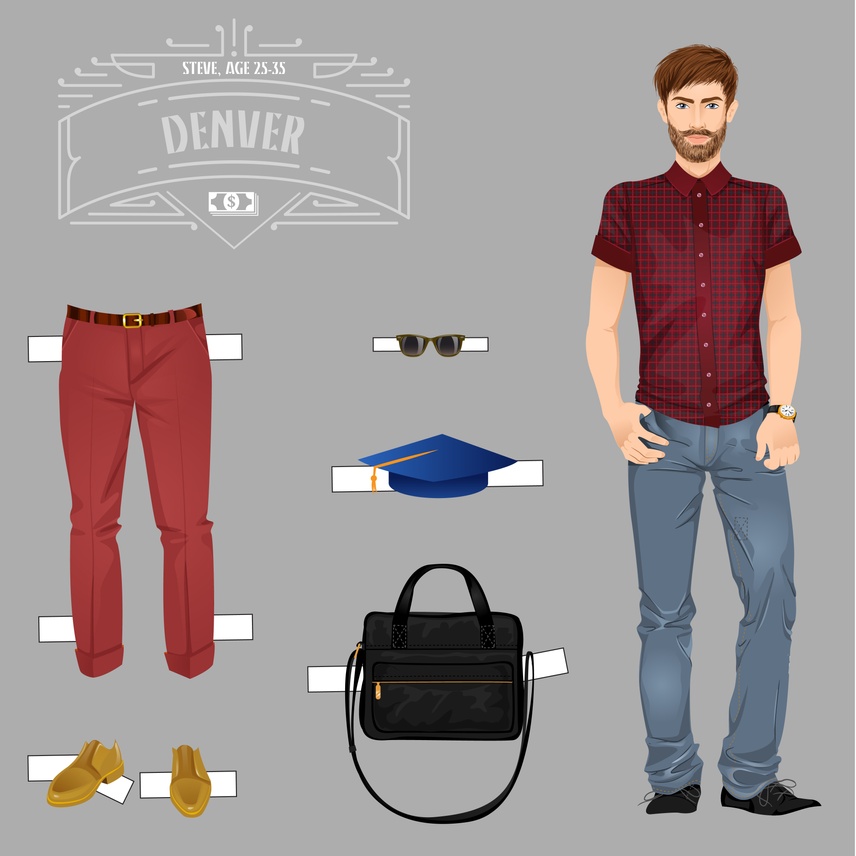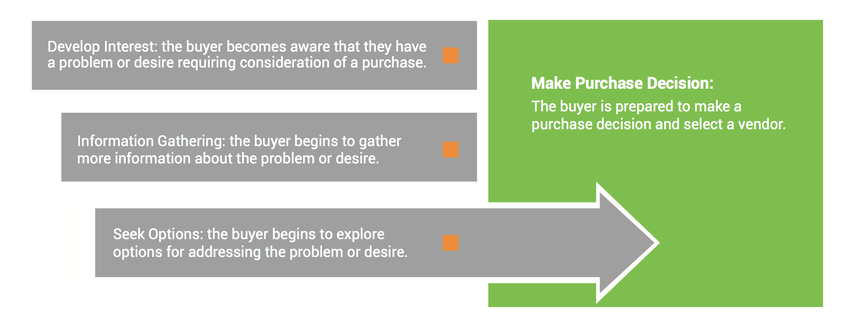How to Build a Buyer Persona with Data
Buyer personas represent segments of your current and potential customer base that share similar characteristics and buying behavior. By creating buyer personas, you can tailor your content to better target and engage your audience, and provide them with better and more helpful content.
What is a Buyer Persona?
Buyer personas are categories or groups of your customer and potential customer base; they are grouped by major traits that drive buying behavior. Establishing buyer personas helps us create content better targeted to our audience.
These fictional characters we create are based on real data, gathered and combined in a way that represent how someone may use our site or service. Having this focal point helps us better craft our content for that specific audience, leading to increased sales or conversions.
Personas should not be limited to the content creation process; rather, they should be used throughout the entire development process as well.
For example:
- A designer can create a persona and craft a layout to that person’s specific needs
- A developer can build a websiteWebsite
A website is a collection of HTML documents that can be called up as individual webpages via one URL on the web with a client such as a browser.
Learn more with the functionality catered to a specific persona - Editorial can create the content that will be distributed to the various personas
- The marketing/analytics team can measure success within the website based on each persona
Creating a Buyer Persona
The first step to creating a buyer persona is to assign it a gender and name. Then you can start filling out more information about this fictional person you’re targeting:
- What is his/her job title?
- How much does he/she make?
- Where are they located?
The best thing about personas is that you can keep adding to and changing them. Remember to keep in mind: the more granular you are, the easier it will be to create content that resonates.
Get deeper with these detail questions:
- Do they have a family?
- What are their goals?
- What can they hope to accomplish with your product/service?
- What is their level of education?
Get even deeper by reaching out to other departments:
- Brush up on your interdepartmental communication. Ask your coworkers what questions they are asked frequently. More often than not, the information we’re looking for may already exist in the form of any email reply or stock answer given over the phone.
- Ask the sales and customer service department what five questions they are most commonly asked. Get their answers as well.
Once these questions are collected, editorial can begin crafting specific content catered to these questions. Get excited -- you should start to see your content calendar fill up.
Buyer Persona Example: Steve
Meet Steve. Steve is in marketing and looking to advance his career.
In order to better communicate with Steve, we are going to need to get more details: Where does he live? What’s his daily routine?
Steve is in the 25-35 age range, makes 70k per year, has a bachelor’s degree and lives in Denver, Colorado.

25-35 age range and 70K salary tells us that Steve is most likely in a middle-management position. Denver, Colorado means he lives in a location where the weather is temperamental. With our content, we can use geo-specific references to relate to him (i.e. a collective annoyance for Denver's indecisive climate).
With these details, we mocked up Steve as a paper doll to get a clearer idea of what "Steve" would look like. Each piece represents a hypothetical attribute:

Creating a visual representation like this one will make it easier for you to evangelize your personas across departments.
Why Steve's Role in the Company Matters
It's important to know what your persona's specific role is within their company. Do they have the authority to make purchasing decisions? Are they just the gatekeeper to the person we need to speak with?
Steve’s job role is going to play an important part in how we further craft our content. Here we need to know what his job exactly entails so we can speak to the needs of his company as well as how we can make his job frictionless.
For this exercise, we’re going to say that Steve is in middle management and does not have the ability to make purchasing decisions. That’s okay -- Steve is most likely the person to conduct research and report back to someone who does have purchasing power. So getting Steve’s attention is still very important.
Steve’s role at his job is to oversee and facilitate reporting for management. He is looking for a tool, or software, that saves time and will allow them to cut out several other tools they’re using. What’s important to him is keywordKeyword
A keyword is what users write into a search engine when they want to find something specific.
Learn more rankingsRankings
Rankings in SEO refers to a website’s position in the search engine results page.
Learn more and competitive analysis.
Now that we have a profile for someone in middle management, let’s see how another persona would look with someone in a higher position.
Buyer Persona Example: Lucy
Meet Lucy. Lucy is an in-house marketing manager for a company that has been around awhile with many brand name competitors.
Her responsibility is to establish her company as a thought leader in the industry and expand their presence in the competitive retail space.
Lucy is in the 35-45 age range and a married mother of two. She lives in Philadelphia, Pennsylvania and makes 85k-105k per year.

Her title and experience allow her to approve spending on any additional tools/services that will help her increase her company’s web presence.
Here is Lucy as a paper doll, each piece representing her hypothetical attributes.

Lucy’s challenge, to gain more of a retail presence, can be facilitated by a tool that offers both competitive and keyword research.
When creating content for Lucy’s persona, we can discuss efficiency, as this will speak to her being a mother and living in a city. We can also include prices since she has the authority to make purchasing decisions.
So how can Steve and Lucy be applied to our marketing strategies?
Enter The Buyer’s Journey
With great tools like Conductor’s Workspaces, we are able to create a buyer’s journey that answers our persona’s questions.

This is important for two reasons:
- We can see the questions our competitors are creating content around
- We are able to see the top questions asked in our industry.
The user’s intent is different in each stage of the buyer’s journey, which is why it’s important to address all of their questions as effectively as possible.
Below is a screenshot that shows just how effective this can be:

You can see for the second question, the monthly search volumeSearch Volume
Search volume refers to the number of search queries for a specific keyword in search engines such as Google.
Learn more is 1,000 and there is little competitionCompetition
Businesses generally know who their competitors are on the open market. But are they the same companies you need to fight to get the best placement for your website? Not necessarily!
Learn more. This would be a great candidate to write content pieces around.
But Conductor’s tool isn’t limited to just one question; it asks several questions in the buyer’s journey that can be applied to any industry:
- In the Awareness Stage: 1. Who? 2. What? 3. When? 4. Where? 5. Why? 6. How?
- In the Consideration Stage: 1. Trial 2. Free 3. Top 4. Best
- In the Decision Stage: 1. Pricing 2. Buy
All of these questions serve a purpose and are an opportunity to generate content for your audience.
Want to get deeper into mapping your content to your buyer personas and buyer's journey? Download our worksheet on the right hand side to help you take what you've created, and align it to your content.







